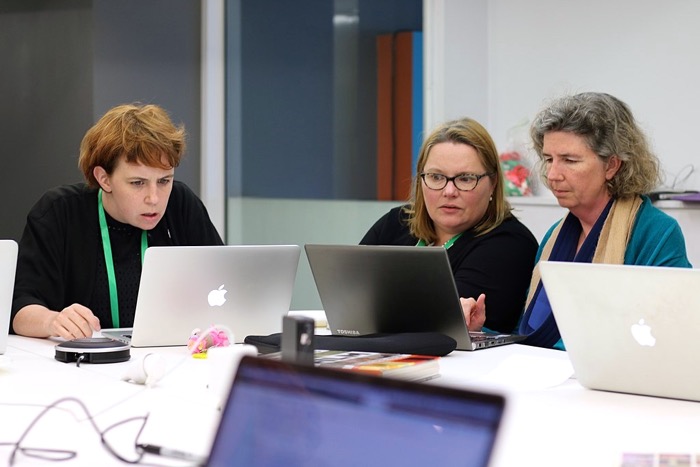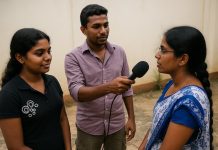
We asked senior journalists in the Media Helping Media network what journalists should look out for when covering elections? The responses are below.
1: Pressure – Beyond the Surface of Influence
- Going beyond the obvious
- Don’t just report on blatant bribery. Investigate the networks involved. Who are the power brokers behind these attempts? Follow the money trail.
- Analyse the psychological tactics of intimidation. How do subtle threats, coded language, or targeted disinformation campaigns create a climate of fear?
- Examine the impact of unbalanced media access. How does it shape public perception and create an uneven playing field? Quantify the disparity if possible.
- Adding depth and insight
- Interview psychologists and sociologists to understand the effects of pressure on voter behaviour.
- Use data analysis to map the distribution of reported intimidation incidents and identify hotspots.
- Provide historical context by comparing current pressure tactics to past elections or similar situations in other countries.
- Investigate the use of online pressure, and the use of bots and trolls to manipulate public opinion.
- Perspective
- Frame pressure as a systemic issue, not just isolated incidents.
- Consider the long-term consequences of unchecked pressure on democratic institutions.
2: Barriers – Unmasking disenfranchisement
- Going beyond the surface
- Don’t just report on long lines at polling stations. Investigate the root causes of those delays. Are they intentional or the result of incompetence?
- Explore the intersectionality of disenfranchisement. How do barriers disproportionately affect marginalised communities, such as minorities, the elderly, or people with disabilities?
- Examine the legal and regulatory framework governing voter registration and eligibility. Are there loopholes or ambiguities that can be exploited?
- Adding depth and insight
- Use data visualisation to illustrate the geographic distribution of voter registration challenges.
- Conduct in-depth interviews with voters who have been disenfranchised, amplifying their voices and experiences.
- Consult with legal experts to analyse the constitutionality of voter registration laws.
Investigate the digital divide, and how a lack of access to the internet can disenfranchise voters.
- Perspective
- Frame disenfranchisement as a violation of fundamental democratic rights.
- Highlight the long-term consequences of voter suppression on civic engagement and political representation.
3: Fraud – unraveling the web of deception
- Going beyond the surface
- Don’t just report on allegations of fraud. Investigate the evidence behind those claims.
- Examine the mechanisms of fraud. How are ballots stolen, stuffed, or destroyed? What vulnerabilities exist in the election system?
- Analyse the role of technology in election fraud, including cyberattacks and the spread of disinformation.
- Adding depth and insight
- Use forensic analysis to examine ballots and other election materials.
- Consult with cybersecurity experts to assess the vulnerability of election systems.
- Fact-check claims of fraud, providing clear and accurate information to the public.
- Investigate the use of deep fakes, and other forms of manipulated media.
- Perspective
- Frame fraud as a threat to the integrity of the election process.
- Emphasize the importance of transparency and accountability in election administration.
4: Irregularities – decoding logistical failures
- Going beyond the surface
- Don’t just report on logistical problems. Investigate the systemic factors that contribute to them.
- Examine the preparedness of election officials. Were they adequately trained and resourced?
- Analyze the impact of irregularities on voter confidence and participation.
- Adding depth and insight
- Use data analysis to track the frequency and severity of logistical problems.
- Interview election officials, poll workers, and voters to understand the challenges they faced.
- Provide clear and concise explanations of complex logistical issues.
- Use maps to show the location of irregularities.
- Perspective
- Frame irregularities as a symptom of broader systemic weaknesses.
- Advocate for reforms to improve election administration and ensure a smooth and efficient process.
5: Information – cultivating informed citizens
- Going beyond the surface
- Don’t just report on the candidates’ platforms. Provide context and analysis of their policy proposals.
- Examine the effectiveness of civic education programmes. Are they reaching the target audience?
- Analyse the role of media literacy in combating disinformation and promoting informed decision-making.
- Adding depth and insight
- Use fact-checking and data journalism to hold candidates accountable for their statements.
- Provide in-depth explainers on complex election issues.
- Host public forums and debates to facilitate dialogue between candidates and voters.
Investigate the level of media literacy within the electorate.
- Perspective
- Frame civic education as an essential component of a healthy democracy.
- Emphasise the responsibility of journalists to provide accurate and unbiased information.
- Highlight the dangers of information vacuums, and the way that they can be filled with misinformation.
By adopting these approaches, journalists can go beyond simply reporting on election events and instead provide valuable insights that empower citizens to make informed decisions and hold their elected officials accountable.








